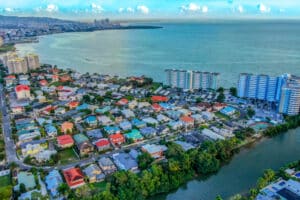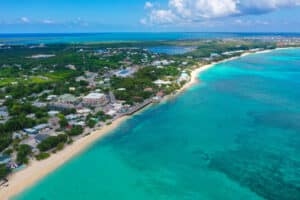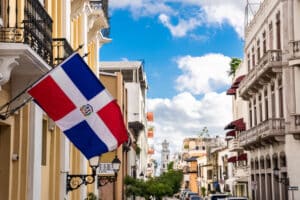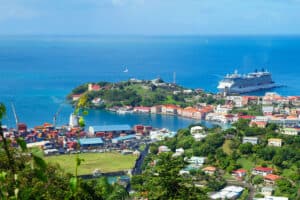You’re traveling to St. Lucia and wondering how safe it is?
According to the US State Department, St. Lucia is a Level 1 country, which means that potential travelers should exercise normal precautions, just like they would in any other country.
But, it gets a bit more complicated when you delve deeper into the details. Here are some things you should take into account when traveling to St. Lucia:
- Crime rate: There’s a high rate of property crimes and assaults
- COVID Safety: No restrictions
- Natural Disasters: St. Lucia is below the hurricane belt, so storms are rare
- Carbon Monoxide: No reported cases of CO poisoning, should be perfectly safe
- Beach Safety: Stay away from the eastern shores and the strong currents
- Danger Zones: Keep away from Wilton’s Yard, Leslie Land, Chaussee Road, Marchand, and Morn du Don
- Traveling Solo or with Family: Both are generally safe, but women should exercise added caution
Now, let’s talk some more about how to make your holiday in St. Lucia as safe and pleasurable as possible.
Are you planning a last minute trip to St. Lucia? We’ve put together all the resources you’ll need for a fun & safe travel:
🛌 Best & Safest Places to Stay in St. Lucia:
👉 The Landings Resort and Spa – 4 swimming pools, Private beach area, Bar
👉 Ladera Resort – Fitness centre, Airport shuttle (free), Restaurant
👉 Windjammer Landing Villa – Good breakfast, Bar, Spa and wellness centre
👉 Royalton Saint Lucia – Sea view, Fitness centre, 9 restaurants
⛱️ Fun Activities & Tours in St. Lucia:
👉 Land and Sea Tour in St. Lucia
👉 ATV Tour in St Lucia
👉 Soufriere Volcano Experience
🚗 Best & Safest St. Lucia Transportation Services:
👉 Airport Pickup Service – Welcome Pickups
👉 Rent a Car – DiscoverCars
🙏 Stay Safe While Travelling:
👉 Safetywing (for medical insurance)
👉 VisitorsCoverage (for trip insurance)
Is St. Lucia Safe?
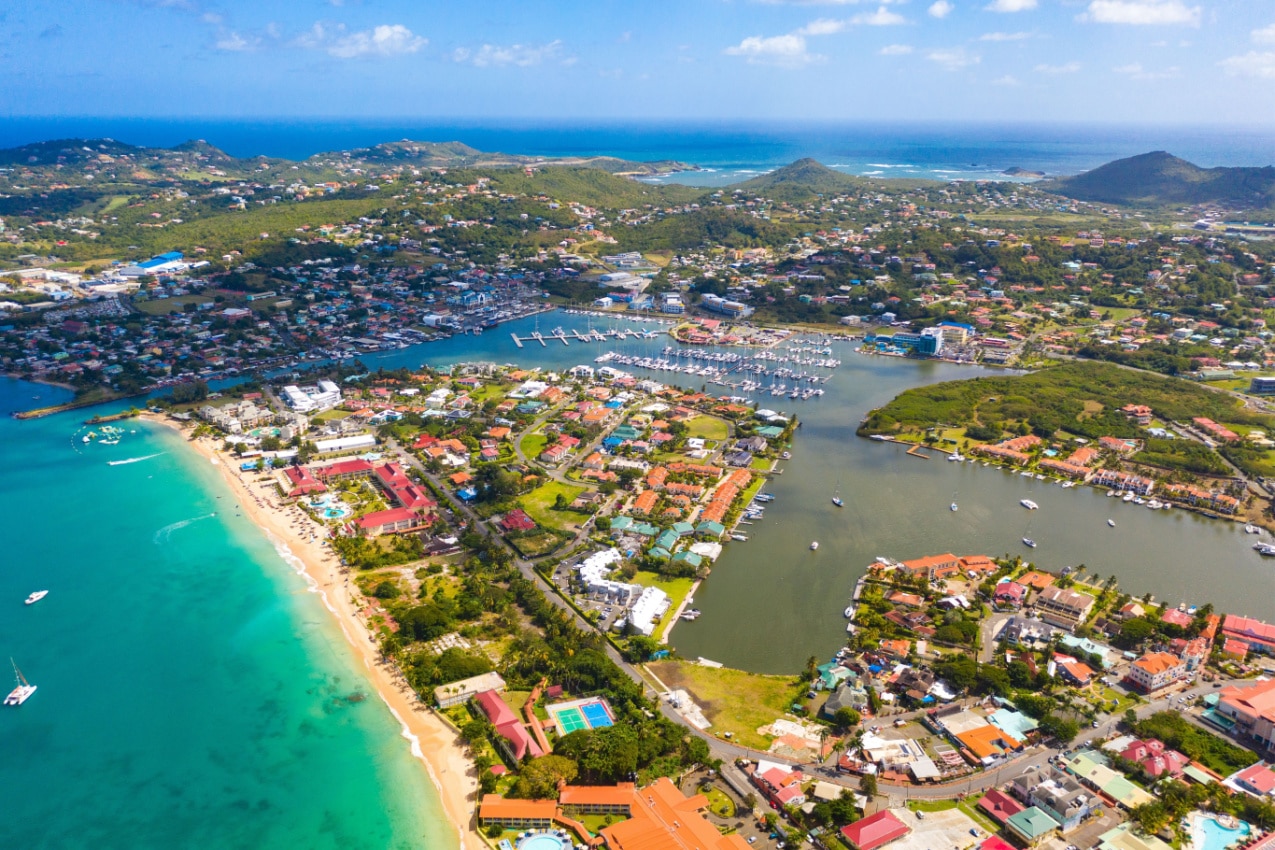
St. Lucia is a generally safe country.
That being said, the island has its fair share of crime in the form of theft, pickpocketing, and fraud. But, following some simple safety tips and using your common sense will definitely keep you safe.
Violent crimes are a problem too, but most of them target the local population of St. Lucia, so tourists needn’t worry about that. The existing gangs usually operate in problematic areas, like Vieux Fort and other places that you should avoid at all costs.
Finally, although there’s a high risk of hurricanes in the Caribbean, St. Lucia is completely safe: the last strong hurricane to hit the island was in 2010.
A Comprehensive Look at St. Lucia Crime Rates
St. Lucia has a crime rating of 71.05, which places this small island in the “high” category.
According to this rating list, St. Lucia has a lower crime rating than Martinique, which has 82.14, but higher than Barbados with 55.27, or Guadeloupe which has a crime rating of 62.50. Unfortunately, the crime rating in St. Lucia has risen in the last three years.
According to Numbeo, St. Lucia has a big problem with property crimes, drugs, vandalism, assault, and bribery. For a more comprehensive picture, check out the data in the table.
| Crime Rates in St. Lucia | September 2023 (Last Update) |
| Level of crime | 71.05 |
| Crime increasing in the past 3 years | 75.00 |
| Problem people with using or dealing drugs | 73.75 |
| Problem with property crimes such as vandalism and theft | 61.25 |
| Problem with violent crimes such as assault and armed robbery | 65.00 |
| Problem with corruption and bribery | 80.00 |
| Safety walking alone during daylight | 60.00 |
| Safety walking alone during night | 30.00 |
Source: Numbeo
The Government of Canada advises potential travelers to exercise normal precautions. But they also emphasize that crime-related incidents do occur in St. Lucia. There’s a risk of the following crimes:
- Violent crime and gang activity is concentrated in Vieux Fort
- Petty crimes like pickpocketing and bag snatching occur during festivals, holidays, and carnivals
- Fraud is common while using debit cards, credit cards, and ATMs
- LGBTQI+ individuals may suffer harassment is showing affection in public
Police Presence in St. Lucia
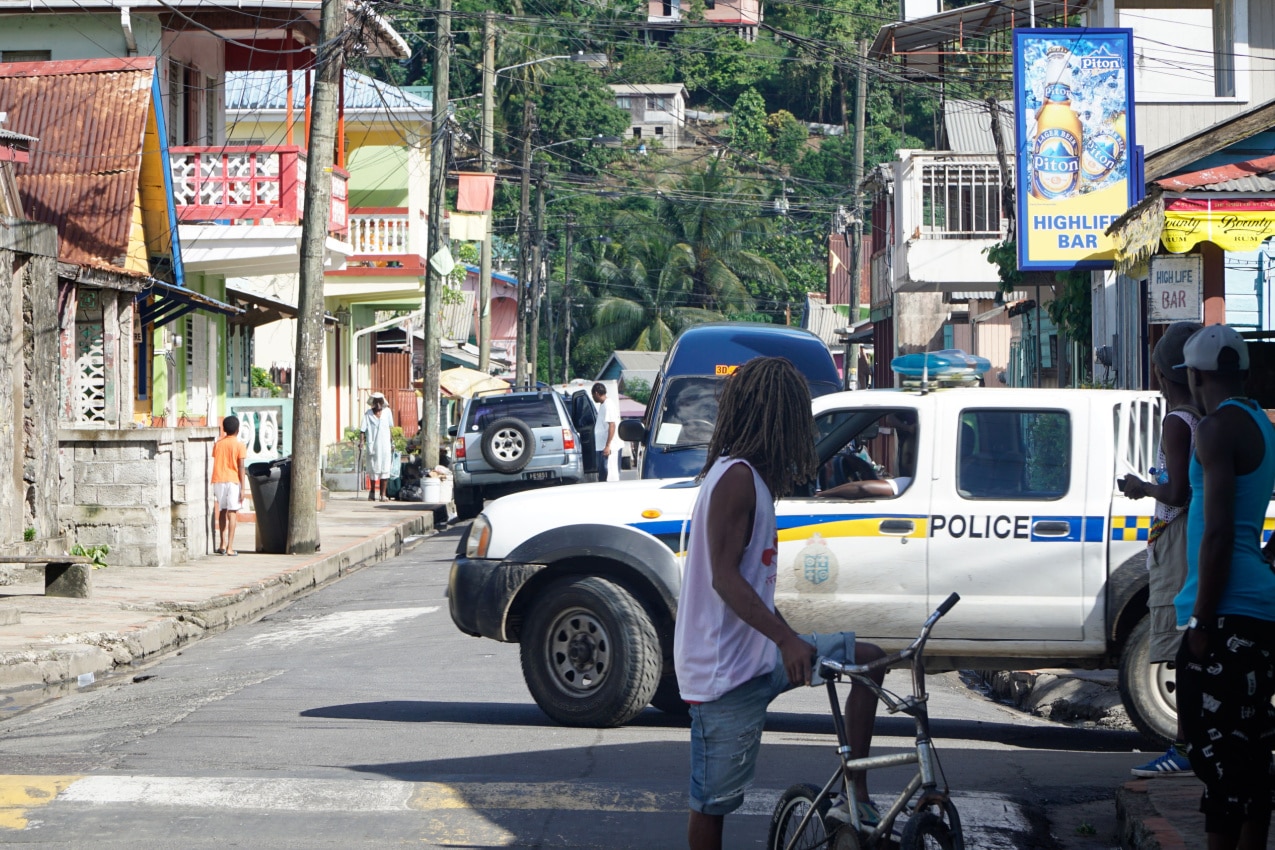
St. Lucia is protected by the Royal Saint Lucia Police Force (RSLPF). The police force was founded almost two hundred years ago, in 1834.
They have 14 police stations scattered across every part of the island, amounting to a total of 1,000 police officers and civilian employees. The Special Service Unit and the Coast Guard are responsible for the internal security of the island, while the Regional Security System is for general defense.
In 2015, the Royal Saint Lucia Police Force informed the public that the 1,000 officers were not nearly enough to maintain order on the island, especially after the high surge of crime rates in the last ten years. They are constantly asking for more resources and more employment.
Fortunately, in 2021, the US ambassador to Barbados and the Eastern Caribbean announced that the United States of America is restoring their assistance to some of the departments of the Saint Lucia Police.
The reputation of the Royal Saint Lucia Police Force is frequently questioned due to the high rating of bribery. Nevertheless, tourists seldom get intertwined in such issues. As long as you’re a law-abiding tourist and respect the destination you’re visiting, you’ll have no problems with the police. Of course, they should be your first point of contact if you ever feel threatened.
COVID-19 Safety Protocols in St. Lucia
As of November 7, 2023, St. Lucia is safe and open for tourists, without any COVID-19 requirements.
You don’t have to worry about contracting COVID-19 while traveling to St. Lucia and you don’t need to submit any tests or proof of vaccination before you enter the country. There’s also no quarantine upon entering St. Lucia.
There are no restrictions or mask requirements in:
- Public transportation
- Attractions and landmarks
- Businesses and establishments
- Restaurants, bars and cafes
But, you do have to wear face masks in hospitals.
As of November 07, 2023, St. Lucia has had 30,149 active Coronavirus cases, of which 29,095 have fully recovered. The number of fatal incidents from COVID-19 amounts to 410 people.
Perils of Nature: The Risk of Natural Disasters in St. Lucia
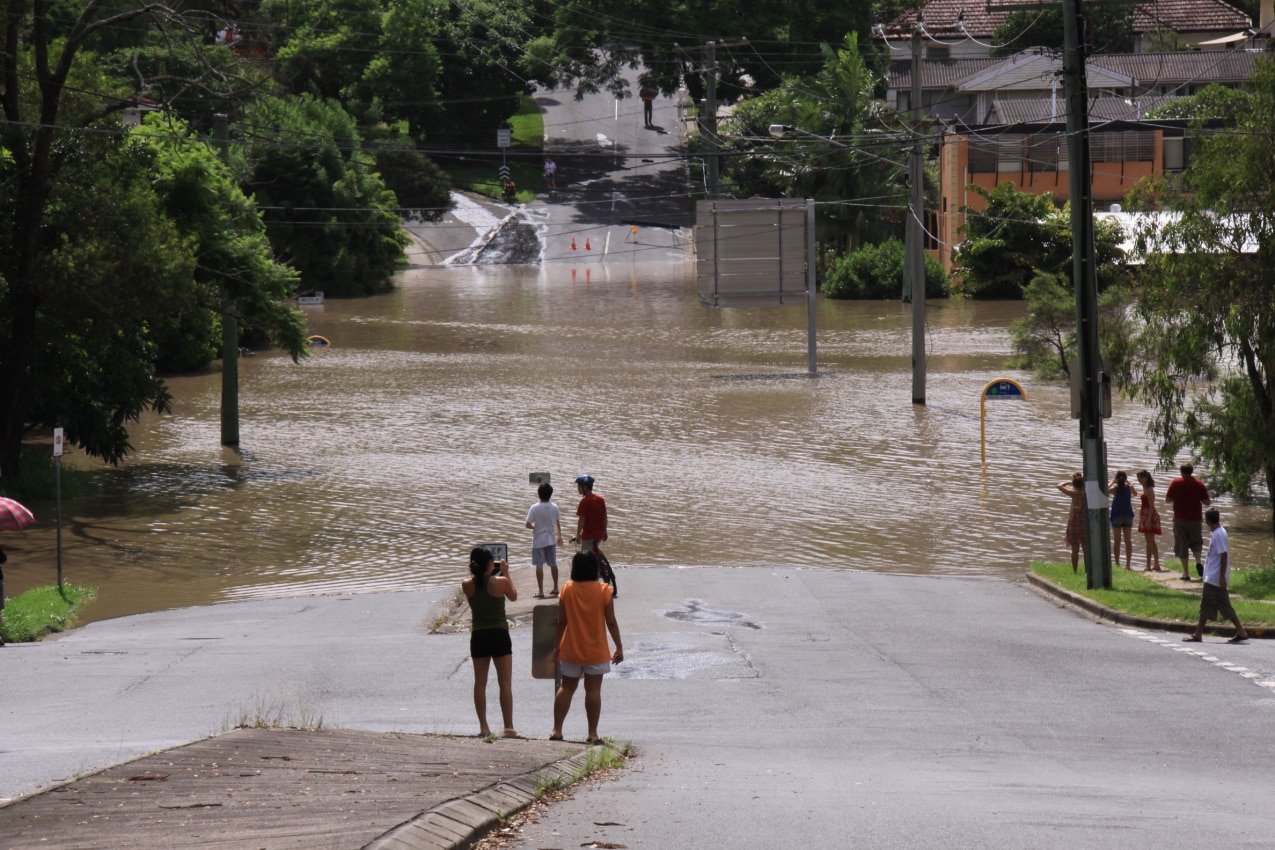
St. Lucia isn’t susceptible to hurricanes and powerful storms, especially during the so-called hurricane season in the Caribbean that lasts from June through November. Earthquakes, on the other hand, aren’t an imminent threat to the island.
According to some statistics, there’s a 10% chance that an earthquake could hit the island and cause some damage in the next 50 years.
Generally speaking, St. Lucia is not at high risk of hurricanes and earthquakes, so don’t worry.
Hurricanes in St. Lucia
St. Lucia is located in the southeastern part of the Caribbean, while the hurricane belt — that place in the ocean where hurricanes build up their strength — is far to the north.
That’s why strong storms usually either completely bypass the island, or reach it after their strength has decreased significantly. Rather than hurricanes, St. Lucia sometimes gets heavy rain storms.
According to the Saffir–Simpson Hurricane Wind Scale (SSHWS), hurricanes are divided into five categories:
- Category 1: Very dangerous winds that are sure to cause damage, like breaking tree branches and damaging roofs
- Category 2: Extremely dangerous winds that’ll probably cause extensive damage, like snapping shallow-rooted trees and extensive damage to houses
- Category 3: Causes devastating damage, like toppling entire trees and blocking roads. Almost surely results in the loss of electricity and water in buildings
- Category 4: Considered catastrophic because it causes enormous damage. Affected areas would be uninhabitable for some months
- Category 5: Can destroy entire cities, and are always accompanied by catastrophes, like destroyed homes, toppled trees, power outages, and uninhabitable areas
Historically speaking, only 14 hurricanes have come close – within 60 miles – to St. Lucia since 1850. Only one of them was a Category 4 hurricane, and another one was classified as Category 3.
The last hurricane to hit the country directly was Hurricane Tomas, in 2010. It caused floods and landslides, and considerable damage to the island, estimated at around 336.15 million US dollars. Eight people died as a result of the storm. Tomas was classified as a category-2 hurricane.
Some Useful Tips in Case of a Big Storm or a Hurricane
Although the chances of a big storm or a hurricane hitting St. Lucia are small, it’s smart to be prepared for the worst.
Check out the Extreme Weather and Natural Hazards section provided by the foreign travel advice of the Government of the UK. They provide general education information concerning tropical cyclones (including hurricanes), flooding earthquakes, volcanic eruptions, and tsunamis
The official Australian travel guide offers a thorough and comprehensive set of tips in case of a hurricane:
- Gather as much information as you can about safe routes and safe houses from your location that will lead you to safety
- When you first find out a hurricane is set to strike, decide whether you want to leave the island or stay. If you plan to stay, follow the official headlines and policies of the government and institutions at hand
- Pack your emergency supplies before you leave your lodging and as you head toward the designated safe area
- Keep your family, friends, and loved ones informed about your whereabouts and plans in case of communication failures at a later time
- Stay inside the designated safe house until the official authorities say otherwise, and proclaim the end of the storm
Breathing Safely in St. Lucia: Carbon Monoxide Awareness and Prevention
Carbon monoxide is an undetectable toxic gas. It takes the lives of 420 people in the United States every year. It’s odorless, tasteless, and completely invisible to the naked eye. But, what actually makes carbon monoxide so dangerous?
Carbon monoxide is mostly dangerous in closed spaces, like rooms with closed windows and doors, when there’s no proper circulation of air. It is created when carbon-based fuels don’t burn entirely. Broken stoves, gas water heaters, heating devices, or furnaces are most susceptible to these kinds of malfunctions.
When you breathe in carbon monoxide, it slows down or completely blocks the blood’s ability to transfer oxygen through the body. The common symptoms of poisoning from this deadly gas are headaches, stomach aches, vertigo and even vomiting.
Prolonged exposure to the gas may lead to suffocation, damage to the lungs and the brain, paralysis, and worse – loss of life.
There are no documented fatalities from carbon monoxide poisoning in St. Lucia. The island has a very low rate of accidental poisoning. Namely, according to statistics from 2016, 0.200 per 100,000 people are affected.
The most publicized case of carbon monoxide poisoning in the Caribbean happened in 2022 when three American tourists succumbed to the poisonous gas in the prestigious Sandals Resort in the nearby Bahamas. Ironically enough, the whole thing could have been prevented if a simple CO detector had been installed in the room.
If you want to feel extra safe, you can buy a portable CO detector which costs only around 20$. That way, you won’t have to worry whether there’s one installed at your accommodation.
Safety of St. Lucia Beaches
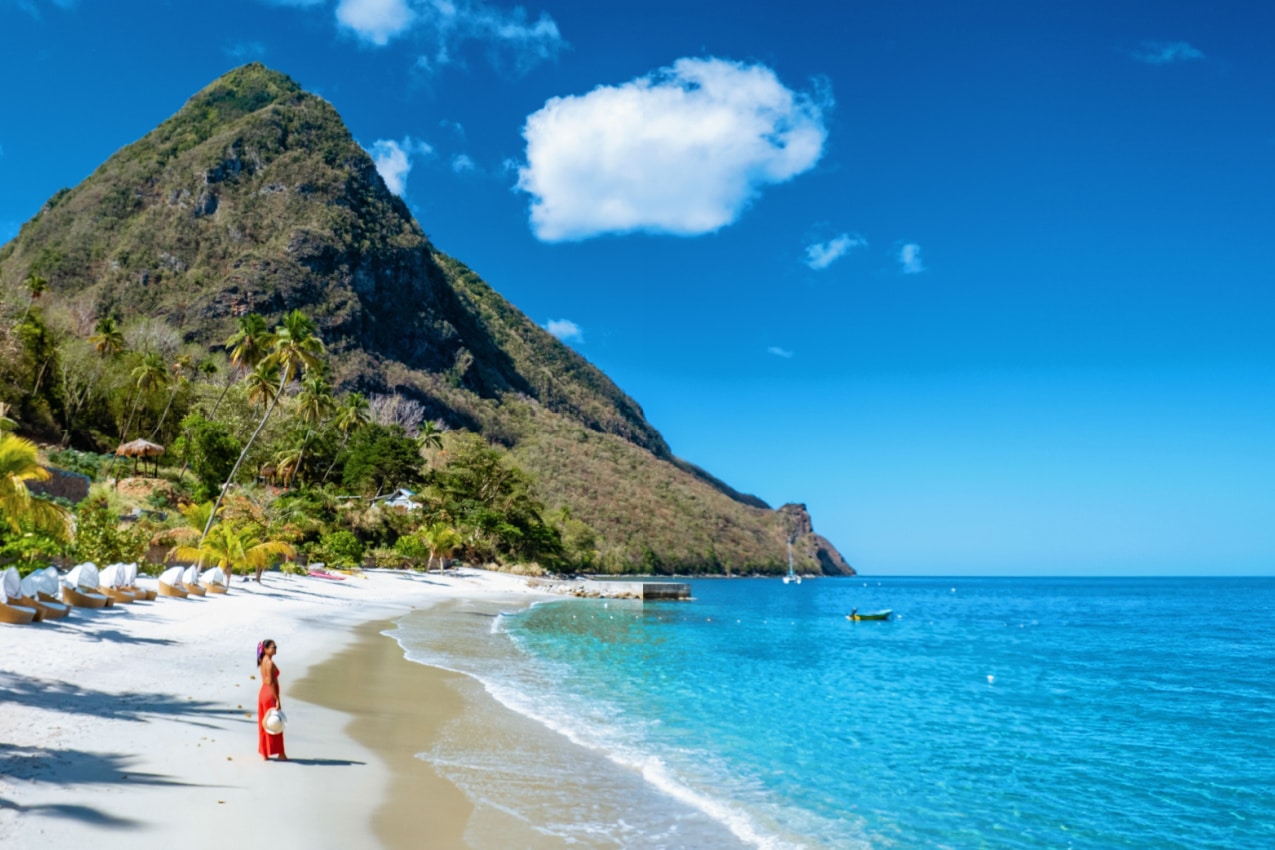
The beaches in St. Lucia are not only beautiful but also safe. But, since we’re talking about the open ocean, there are things to consider before going for a swim.
Both the British and Canadian travel advisories urge tourists in St. Lucia to be careful regarding:
- The currents in some parts of the ocean can be deceptively strong and dangerous
- Most beaches are unsupervised and don’t have the proper warning flags
Generally speaking, the beaches in the eastern parts of the island are considered unsafe. They face the Atlantic Ocean and are much more choppy and wild. Plus, the waves here are the largest, making them popular for surfing but dangerous for swimming.
On the other hand, there are some places that are considered safe on the eastern side of St. Lucia, like the Coconut Bay Beach Resort beach.
Even though the warning flags aren’t always updated or available, you can still consult them whenever possible. This is what the colors indicate:
- Black — Do not swim; deadly currents
- Red — Avoid swimming; dangerous currents
- Yellow — Semi-safe; swim with caution
- White — Dangerous marine life; swim with caution
- Green — Safe to swim
The Canadian travel advisory has some additional tips for staying safe on the beaches of St. Lucia:
- Never swim alone, especially far from the beach
- Keep a safe distance from restricted areas or boats at all times
- Consult the local residents regarding potential hazards, dangerous places to swim, and strong currents in St. Lucia
- Never dive in unfamiliar areas, as you may come upon dangerous rocks, shallow water, or even dangerous marine animals
Finally, although St. Lucia doesn’t have sharks, it has a large jellyfish population. Keep away from jellyfish-infested waters, as their sting is painful and can even be dangerous in some cases.
St. Lucia Weather Patterns: What to Expect
Like almost every Caribbean island, St. Lucia has a tropical climate which divides the year into two seasons: dry and wet.
The dry season lasts between January and April. The weather is relatively colder and rainfall is scarce. The wet season spans from June to mid-November. During the wet season, the island becomes more humid, it rains more frequently, and the temperatures rise.
Generally speaking, the rains are stronger in the mainland, and weaker around the shores. The rainforests around Mount Gimie receive the most rain, while Vieux Fort on the south coast is the driest place on the island.
The sunshine is nearly constant year-round. Rainfall, even during the wet season, manifests in downpours or thunderstorms, which means that it’s strong but quite short. The temperatures are also stable, and vary between 79°F (26°C) in January, to 83°F (29°C) in November.
Before we get into the specifics of particular seasons, here are a few quick facts about the weather in St. Lucia:
- The hottest month of the year is November
- The coldest month of the year is January
- The wettest month of the year is October (10.5 inches of rainfall)
- The sunniest month of the year is March (with around 8 hours of bright sunshine on average)
Spring
Spring is usually considered the best season for tourists. It’s sunny and warm all the time, especially in Mach, when the sun shines bright in the sky for around eight hours. The rain, on the other hand, is very scarce. On average, March and April (which are the driest months of the year) have no more than 3.5 inches of rainfall per month. The temperature of the sea goes from 81°F (27°C) in March and April, to 82°F (28°) in May.
Average temperatures by month:
- March: 86°F / 74°F (30°C / 23°C)
- April: 87°F / 74°F (31°C / 23°C)
- May: 88°F / 76°F (31°C / 24°C)
Summer
Summer signals the arrival of the wet season in St. Lucia. There’s still plenty of sunshine on the island, especially during July and August, but the rains and the humidity are starting to creep in. On average, the rainfall in the summer is around 8.5 inches, while the temperatures move between 28°C (82°F) in July and 29°C (84°F) in August. Simply put, it’s the hottest season in St. Lucia.
Average temperatures by month:
- June: 88°F / 77°F (31°C / 25°C)
- July: 88°F / 77°F (31°C / 25°C)
- August: 88°F / 77°F (31°C / 25°C)
Fall
Fall is the least popular season for tourists in St. Lucia. The wet season is in full force, which means a lot of rain and thunderstorms, and a considerably higher (but still small) chance of a hurricane hitting the island. Bright sunshine averages 7 hours in October, lowest in the year, and the temperatures slowly start to drop.
Average temperatures by month:
- September: 89°F / 76°F (32°C / 24°C)
- October: 89°F / 76°F (32°C / 24°C)
- November: 87°F / 76°F (31°C / 24°C)
Winter
Winter and spring are the busiest and most popular seasons for tourists in St. Lucia. In winter, the wet season slowly starts to leave the island, but there are occasional short rainfalls and thunderstorms. On average, there’s eight hours of bright sunshine during all three winter months. The climate is generally dry, and the temperature drops by a few degrees.
Average temperatures by month:
- December: 85°F / 74°F (29°C / 24°C)
- January: 86°F / 74°F (30°C / 23°C)
- February: 86°F / 73°F (30°C / 23°C)
How to Stay Safe in St. Lucia
St. Lucia is generally safe, both for solo travelers and for families. That being said, there are ways to increase your safety and thus peace of mind.
The most important piece of advice is to stay away from dangerous areas and spend most of your time in tourist-friendly neighborhoods.
The most problematic part of the island is its capital Castries, which has the highest crime rates. The following areas and neighborhoods are particularly dangerous and you should avoid them at all times:
- Wilton’s Yard
- Leslie Land
- Chaussee Road, Marchand
- Morn du Don
The safest places on the island, on the other hand, are:
- Rodney Bay
- Pigeon Island and Cap Estate
- Soufriere
Keep in mind that camouflage clothes are forbidden, both for adults and children. Keep your clothing simple and inconspicuous, and avoid looking like a total tourist – it puts you at risk of pickpocketing.
Tips for Traveling Alone
If you’re traveling alone in St. Lucia, here are some practical tips:
- Don’t wander around by yourself at night, especially in less crowded areas
- It’s better to take a taxi than walk at night
- Be careful when partying at local bars and clubs
- Don’t flaunt your valuables on the street, especially money, jewelry, and technology
- Stay away from drugs
- Don’t drink too much alcohol as it could impair your judgment and safety
- Have a “thrown down” wallet to give to a potential mugger instead of your real wallet
- Don’t use an ATM, especially at night
- Get a local SIM card
- Follow the weather forecast at all times
Tips for Solo Women Travelers
Women solo travelers should keep extra safe. St. Lucia has high rates of violence and women–unfortunately, as always–are at the highest risk.
- Try to join a group and travel with other people as often as you can
- Stay away from isolated areas, forlorn streets or back alleys, and isolated beaches
- Keep your apartment or hotel room locked at all times. Don’t open the door after dark, especially if a stranger knocks on the door
- Your phone battery should be charged at all times. It’s also very practical to inform your friends and family about your whereabouts at all times
- Dress so as to fit in with the crowd. We know that everyone has their own style, but sticking out as a solo women traveler is particularly dangerous in St. Lucia
- Get a male guide to accompany you while walking around the cities in St Lucia. The chances that you’ll get attacked in the presence of a man are pretty slim
Tips for Traveling with Your Family
Families shouldn’t face any problems while visiting St. Lucia. But do follow some practical common-sense tips:
- Keep your eyes open at all times. Vigilance is crucial when traveling with your family, especially if you have small children
- Keep your family together. Unnecessary separations could result in unpleasant scenarios
- Rent a car instead of using public transportation. It will save you money (in the long run) and relieve you from stress – waiting for taxis and buses with your kids is no fun
- Bring a medical kit. The sun in the tropics can be pretty rough, especially for children
Safe and Ready to Go!
St. Lucia is a beautiful destination with a lot to offer. As long as you use your common sense and avoid dangerous places, people, and situations, you will have a great time.
Stay out of trouble areas, don’t use drugs, avoid isolated places as much as you can, avoid strong currents and other swimming dangers — and you’ll be fine. If you’re a woman, exercise additional caution: St. Lucia can be rough.
That’s it! Have fun and stay safe on your trip to St. Lucia.
